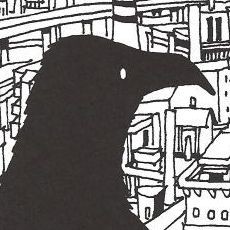Superflat is a new phrase I have discovered today. It sounds like an obscure 60s rock band but is actually a growing artistic movement subverting, rejecting and critiquing Japan’s increasingly superficial pop culture; often by lampooning it with artwork that features the cute, smiling face of a young anime character surrounded by or oblivious to a grotesque or hard hitting monstrosity.
Of the paintings I’ve seen online, the best of “superflat” is both funny and provocative; an important parody of (particularly) the moe aesthetic that current dominates Japan’s (and increasingly, the world’s) otaku and does well to highlight the hollow soul at it’s centre – in particular, the way fawning otaku can escape or gloss over an often disgusting or unsettling reality simply because a certain character looks cute. The old fashioned style of narrative story telling is dying, apparently the character (designs) are all that matter.
It’s interesting to consider works by the likes of Studio 4°C, Hideaki “Evangelion” Anno and Satoshi “Perfect Blue” Kon are often regarded as “superflat” simply because they have created anime that snub, rather than pander to, the ever demanding otaku crowd. Generally “superflat” is just another way of saying “original”, but today it’s becoming ever more important to make a distinction between the mass-produced barrels of fan service and genuine artistic endeavour.
Recommended articles on Superflat
Superflat on Wikipedia
Superflat by Artnet

Leave a Reply